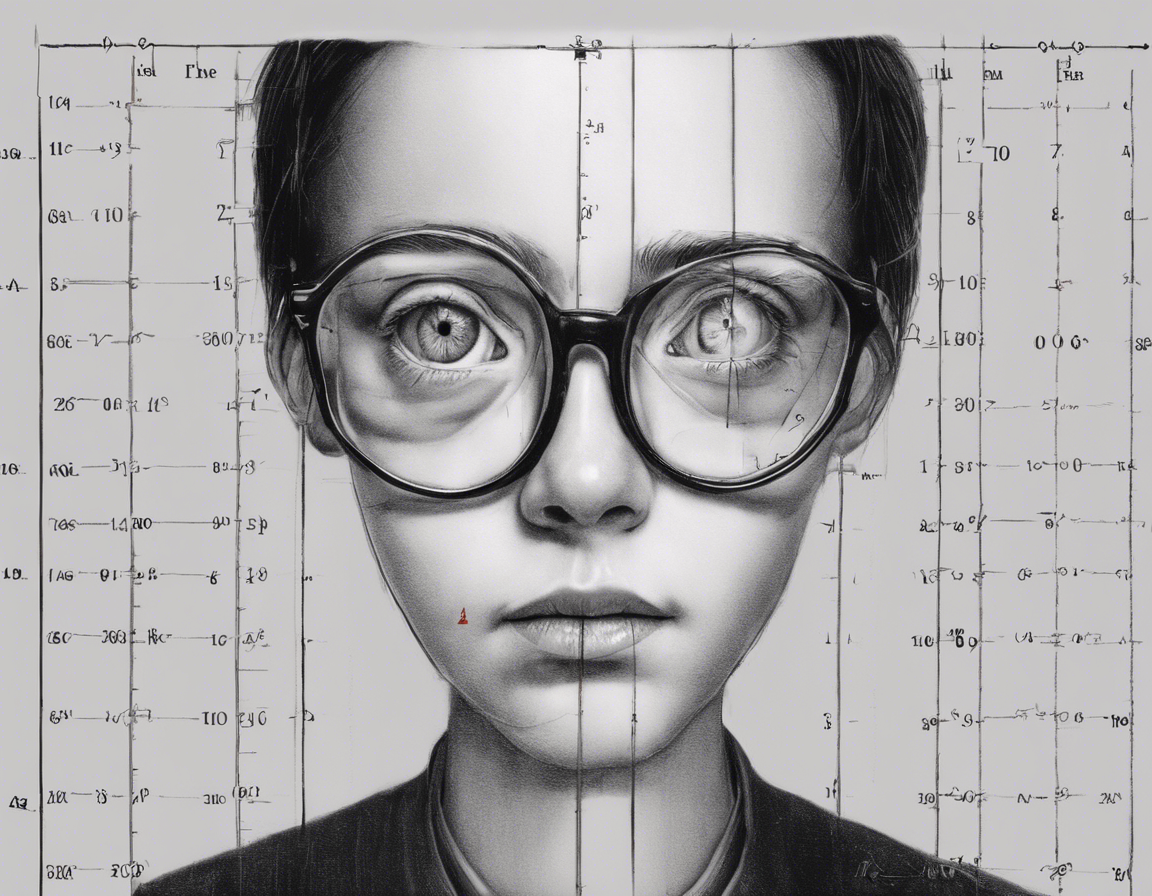What Is Myopia?
Myopia, commonly known as nearsightedness, is a vision condition where a person can see objects up close clearly but has difficulty seeing distant objects clearly. It occurs when the light entering the eye focuses in front of the retina instead of directly on it.
Understanding Myopic Vision
When a person has myopia, distant objects appear blurry, leading to the need for glasses or contact lenses to correct the refractive error. The degree of myopia is measured in diopters, with higher numbers indicating more severe nearsightedness.
The Concept of Far Point
In the context of myopia, the far point refers to the distance at which a myopic person can see clearly without the aid of corrective lenses. In other words, it is the farthest point from the eye at which the person can focus clearly.
Quantifying the Far Point
The far point of a myopic person can be calculated based on their degree of myopia. For example, if a person has a myopia of -2.00 diopters, their far point would be 50 cm (1 meter divided by 2.00). This means that without corrective lenses, the person can see objects clearly only up to a distance of 50 cm.
The 80cm Far Point
For a myopic person with a refractive error of -1.25 diopters, their far point would be approximately 80 cm (1 meter divided by 1.25). This means that without glasses or contact lenses, this individual can see objects clearly only up to a distance of 80 cm.
Implications of an 80cm Far Point
Having a far point of 80 cm can significantly impact a person’s daily life and activities. For instance, tasks that require seeing distant objects, such as driving or attending presentations, may be challenging without corrective eyewear. Additionally, social interactions and enjoying scenic views may be affected by the limited distance at which clear vision is possible.
Managing Myopia with Corrective Lenses
To address the visual challenges posed by myopia and the 80 cm far point, corrective lenses are commonly prescribed. Eyeglasses or contact lenses with the appropriate prescription can help a myopic person see clearly at varying distances, including beyond their far point.
Alternative Solutions for Myopia
In addition to traditional corrective lenses, there are several alternative solutions for managing myopia and improving vision clarity. These include orthokeratology (ortho-k), which involves wearing special rigid contact lenses overnight to reshape the cornea temporarily, and myopia control techniques such as atropine eye drops and multifocal contact lenses.
FAQs About Myopia and the 80cm Far Point
-
Can myopia worsen over time?
Yes, myopia can progress over time, especially during childhood and adolescence. Regular eye exams are essential to monitor changes in vision and adjust corrective measures accordingly. -
Is myopia a genetic condition?
Genetics can play a role in the development of myopia, but environmental factors such as prolonged near work and limited outdoor time can also contribute to its onset and progression. -
Can myopia be reversed naturally?
While certain lifestyle changes such as spending more time outdoors and taking visual breaks during near work may help slow down myopia progression, complete reversal of myopia solely through natural means is not yet supported by scientific evidence. -
At what age does myopia typically stabilize?
Myopia progression often stabilizes in early adulthood, around the ages of 20 to 30. However, some individuals may experience changes in their vision throughout their lives. -
Is laser eye surgery a permanent solution for myopia?
Laser eye surgery, such as LASIK or PRK, can correct myopia by reshaping the cornea. While it can provide long-term improvement in vision, the eyes can still change over time, potentially requiring enhancements or additional vision correction.
In conclusion, understanding myopia and its impact on vision, including the concept of the far point such as the 80 cm far point in myopic individuals, is essential for effective management and care. By seeking regular eye examinations, exploring suitable corrective options, and adopting healthy visual habits, individuals with myopia can maintain clear vision and enhance their quality of life.

